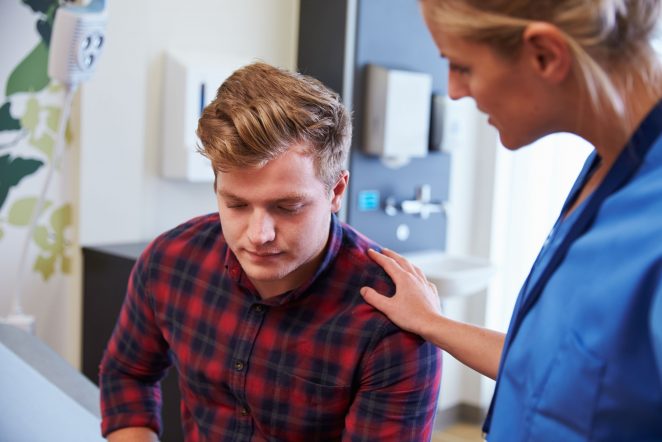Stop and think about it.
This data could actually improve your physical health – not only by counting your steps or prompting you to be more active, but it could also be shared real time with your physician to help track and manage your health conditions.
Even if you don’t have a wearable device yet, it’s likely you will take the plunge in the next few years. You may be surprised to learn that in the next 4 years, it’s estimated wearable device shipments will reach 116 million units, compared to the estimated 27 million from 2014.
In the next 4 years, it’s estimated wearable device shipments will reach 116 million units, compared to the estimated 27 million from 2014.
Where does the data go?
Every second of everyday people record and send health information to the cloud from a wearable device. That data can be accessed anywhere, any time for the purpose of managing and analyzing personal health habits. Right now, it only occurs on a personal level. However, for the first time in history, there is a large untapped repository of millions of people’s health information. This information could lead to the discovery of new medical facts and/or the ability to conduct medical research.
After you think about the world of possibilities, your mind probably turns to the potential drawbacks. One issue with medical providers or researchers using information generated from wearables is privacy and regulation. The biggest question revolves around whether or not the information that is tracked is subject to Health Insurance Portability and Accountability Act (HIPPA) privacy and the security requirements that apply to personal health information. Right now, very few of the wearable products out there are built with HIPPA compliance in mind.
Until January of 2015, there were no clear lines as to what devices needed to be regulated and what ones did not. Although the lines are still fuzzy, the newly issued preliminary guidelines from the U.S. Food and Drug Administration (FDA) says general wellness devices will not need approval. Devices that make specific claims about diagnosing or treating a disease or condition on the other hand, will be subject to regulation.
Interconnectivity and current silos
On the technology side, the hurdle for properly using health information in the cloud is the lack of standard interoperability between the various cloud service providers. Each wearable device company (i.e. Garmin, FitBit, Nike Fuel) has its own cloud to send and store data to. Because standards have yet to be adopted within the cloud-computing community, data from one cloud is unable to talk to data of another, essentially siloing all data. Until now, with the increase in wearable capabilities, the data did not need to interact. However, as the desire for this data to become more integrated strengthens for medical advancement reasons, this interconnectivity will have to evolve.
That’s where Apple comes in. While the Apple Watch is the product grabbing all the attention right now, it is their new open-source platform that’s far more important. The platform, ResearchKit, could potentially break open mobile health monitoring by offering developers the chance to create apps that can talk with one another.
The right step forward
ResearchKit was built for the purpose of helping health researchers enlist and monitor research subjects through Apple devices.There are currently five medical facilities conducting clinical trials using the open-source platform. One of those is Mount Sinai Hospital who plans to use an Asthma Mobile App they developed using ResearchKit to track day-to-day symptoms and habits. The real-time tracking will help researchers and patients understand the disease better.
There are currently five medical facilities conducting clinical trials using the Apple Watch’s open-source platform.
Medical facilities aren’t the only ones that see the collection of wearables health data as monumental for treating, curing or understanding diseases better. Actor Michael J. Fox’s charity for Parkinson’s disease is currently conducting a research project with Intel that involves wearable technology and public cloud computing.
The Michael J. Fox Foundation hopes to improve Parkinson’s disease monitoring by better capturing and objectively measuring patient’s’ actual experience with the disease. One of the main ways Parkinson’s researchers learn about the disease is to collect and analyze data on slowness of movement, tremors, and sleep quality. Until recently, that data was collected on a sporadic basis with a small sample group of people. Now, with wearables, the data can be tracked 24/7 and unhibited. The more accurate data will help researchers create a more precise picture of how the disease progresses and maybe even find a cure.
Although compliance, regulation and technological kinks still need to be worked out for wearable devices, it’s apparent that once unlocked, the treasure trove of information that can be collected has limitless potential. Smart bands, watches, t-shirts, earbuds etc. could be a game changer in the health field. If used properly, these items, once considered just novelty, could measure symptoms, monitor disease progression and maybe even someday lead to cures for diseases we’ve yet to find solutions for.


